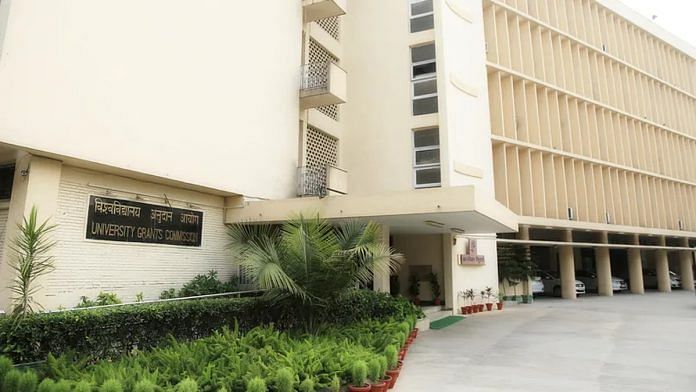New Delhi: Only 1 vice-chancellor (V-C) across 45 central universities belongs to the Scheduled Castes (SC) category and 1 to the Scheduled Tribes (ST), according to data shared in Parliament Monday by Minister of State for Education Subhas Sarkar.
V-Cs are the highest administrative post in a central university.
When it comes to registrars — the second-highest post — 2 in the current lot belong to the SC category in central universities and 5 to ST.
There are 7 V-Cs and 3 registrars from the Other Backward Classes (OBC) category.
Sarkar was replying to a question on the representation of SC, ST, and OBC communities in central universities.
Teaching positions fare better when it comes to representation, the data shows.
Surinder S. Jodhka, a professor at Jawaharlal Nehru University’s Centre for the Study of Social Systems, School of Social Sciences, told ThePrint that there could be several reasons why there are fewer reserved-caste academics occupying higher administrative positions.
“One is that the V-Cship is not always based on merit and is often a political appointment. The second reason is that, about 15 years ago, it was difficult to find candidates who were suitable for reserved-category posts. The same people would have now spent 10 years as professors and become eligible for V-C’s role. But that could not happen.”
One needs at least 10 years of experience as a professor to be eligible for the post of V-C in a central university.
Vivek Kumar, a professor at the Centre for Study of Social Systems, JNU, who works on caste issues, said it’s very important to have enough caste representation at the level of a V-C, who’s not just an administrative head of the institution “but often decides its nature and whether it follows social justice”.
“A V-C’s post was not meant to be a political position but has become one in the last few years. This compromises with the nature of the institution,” he added.
Also Read: DU’s 900 faculty vacancies highest among India’s central universities, govt tells Parliament
What data says
Government data shows that, out of a total 1,005 professors across 45 central universities, 69 are from the SC category, 15 from ST, and 41 from OBC.
This is 6.68 per cent of the total SC reservation, 1.4 per cent of the total ST reservation, and 4.07 per cent of the total OBC reservation, analysis of the data shows.
The constitutionally mandated reservation for SCs, STs and OBCs is 15 per cent, 7.5 per cent and 27 per cent of the total positions.
The latest data is, however, an improvement from two years ago — in 2020, 45 professors belonged to the SC category, 4 to ST, and 9 to OBC.
At the level of associate professor, out of the total strength of 2,700 in all central universities, 195 are from the SC category, 63 from ST, and 132 from OBC. This makes it 7.22 per cent of the total reservation for the SCs, 2.33 per cent for the STs, and 4.88 per cent for the OBCs.
At the assistant professor level — out of a total strength of 8,668, 1,042 faculty members belong to the SC category, 490 to ST, and 1,567 to OBC. This comes to 12.02 per cent of the total reservation for SCs, 5.65 per cent for STs, and 18.07 per cent for OBCs.
Jodhka said the representation of academics from reserved castes is improving slowly across universities. “This is especially [so] in humanities and social science departments. It is because central universities are making conscious efforts to ensure reservation,” he added.
Kumar, however, said one should look at direct appointees against those who were promoted to get a complete picture.
At the level of professor and associate professor, people are promoted from assistant-level posts and not directly hired at the level of reserved positions, which is why the representation is less, he said. At the assistant professor level, direct hiring takes place, making representation at that level better, he added.
(Edited by Uttara Ramaswamy)
Also Read: Out of 122 student suicides since 2014, 111 at central univs, IITs & NITs: Govt tells Lok Sabha



